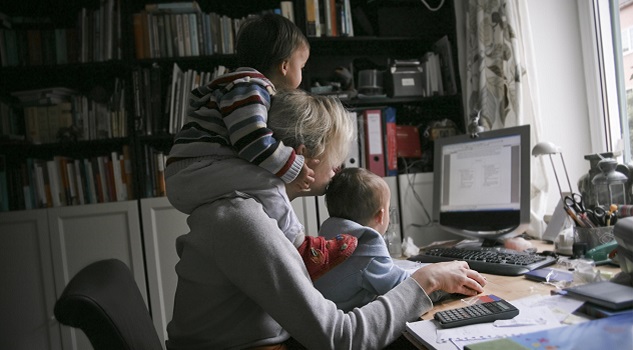It is estimated that by 2020 (only a year away), 50 per cent of employees will be working full or part-time, remotely – particularly from their homes. And people in this hidden workforce may be having their health and safety put at risk.
One of the main challenges for people working from home is achieving an appropriate work-life balance. Organising home life and work life balance can be tough enough. Those who work at home can encounter difficulties in keeping both their family and work obligations in their rightful places as the two realms mingle under one roof.
With school holidays due to start in a few weeks, now is the time for home-based workers to develop some strategies to cope when the kids are on their holidays.
1. Establish boundaries
If you aren’t working the traditional nine-to-five, some family members and friends may assume you don’t have to work at all. Set firm boundaries about not being disturbed while you’re “at work”, even if the office is only down the corridor. One of those rules should be to set your working hours in advance.
No matter how good you are at sticking to your ground rules, there will be distractions when working from home. Try to understand what your distractions might be, plan for them and learn how to deal with them.
Learning to delegate tasks to others — even the kids — can relieve stress for you (though it may initially be a source of stress!). Establishing boundaries will result in better family balance because everyone knows what to expect.
2. Claim your territory
Try to have a specific room or space and equipment to use exclusively for work. A whole room with a door you can close is ideal, but a designated corner will do if you must share rooms. Even if you live alone, you’ll feel more capable and ready for work in your own professional work environment. What’s more, if you are going to claim a tax deduction for expenses associated with a home office, there needs to be a particular space dedicated to that one purpose. Setting up your laptop on the kitchen table does not qualify as a home office.
3. Get comfortable
The principles of ergonomics do not change when you leave work and head for home. Whatever area you choose to work from, you need, at the very least, a desk, chair, computer and some shelving or other storage space. If using shelves or bookcases, bear in mind the height of the top shelves (reaching above shoulder height is a hazardous manual activity) and the possibility of items falling.
Take time to make it an inviting space, decorating it with pictures or mementos in the way that you might a cubicle in your central workplace. You should enjoy being in this space.
4. If you have to look after children — find a home carer or baby sitter
A home office is a great option for mums and dads who want to combine stay-at-home parenting and a career. The thing is, being home all day doesn’t mean you can or should manage home life without help. If you have children at home, as they will be during the school holidays, don’t be afraid to find help balancing home and work. Ask for help from your spouse, partner, relatives, friends or children. If you and your partner both work from home, consider the division of labour and determine who does what, especially if you have children.
David McIvor, CEO, WorkSafety Pty Limited and author of the “Working From Home Safety Handbook – An employee guide to working safely from home”















